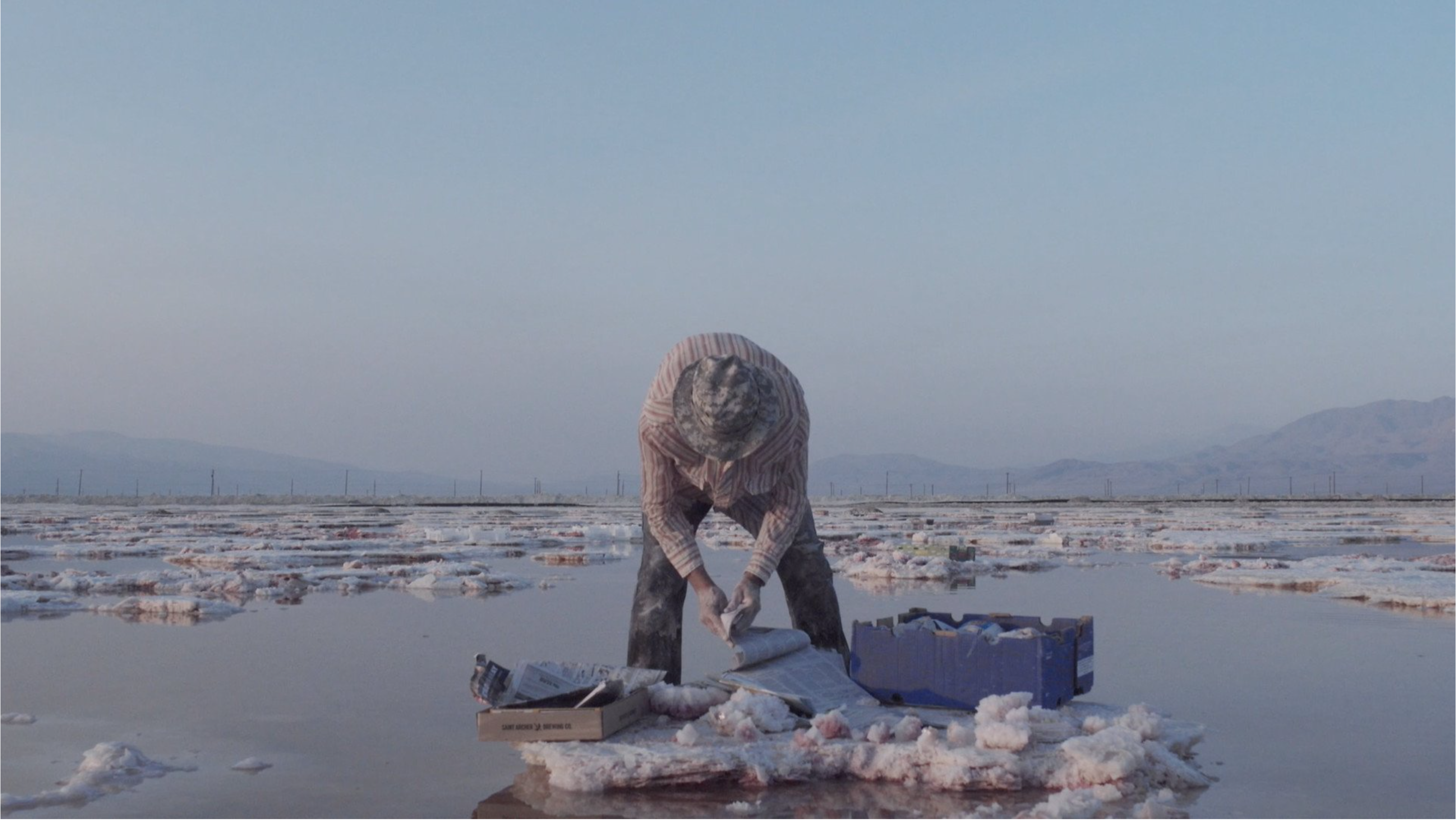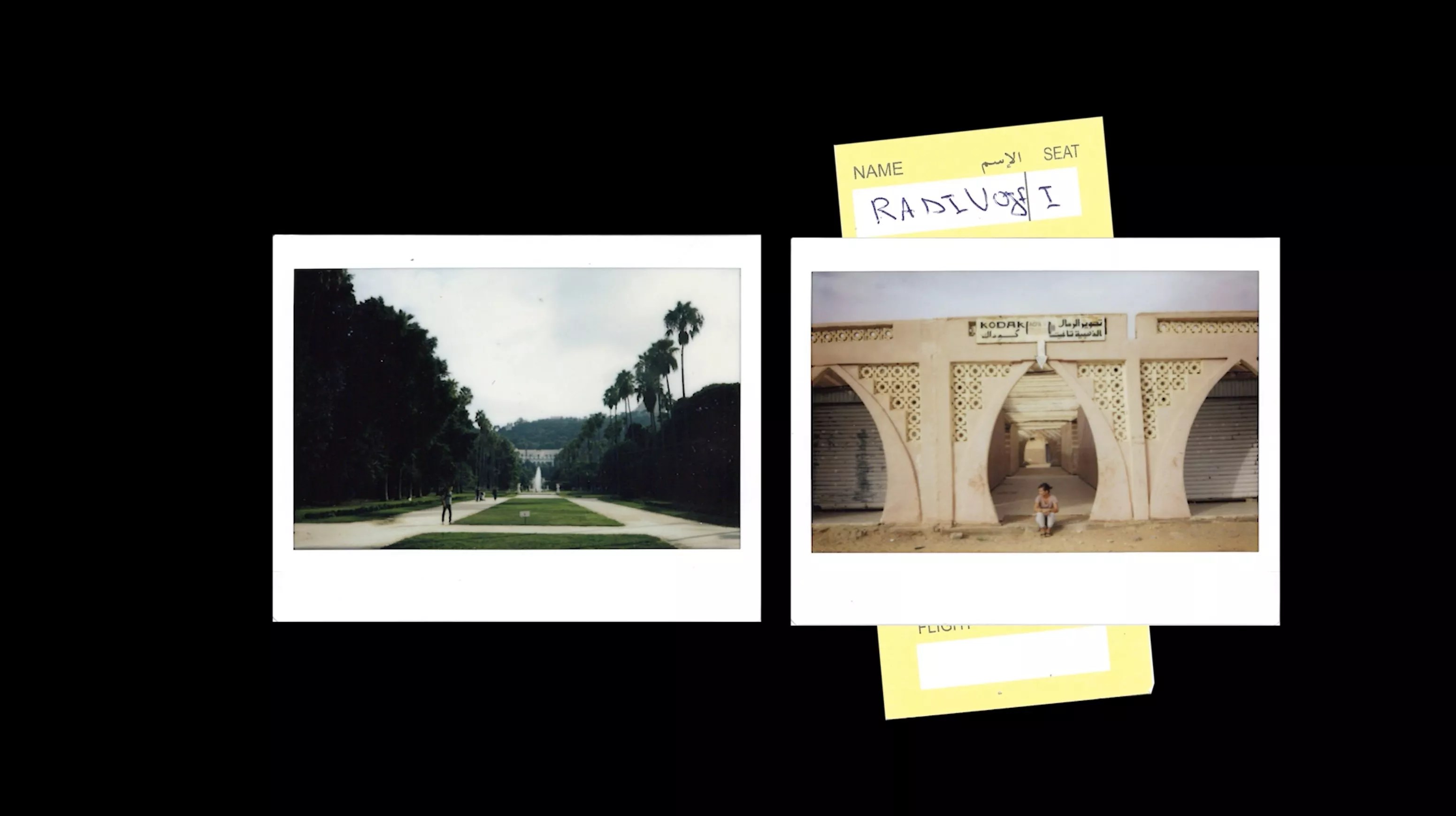
Courtesy Mimesis Documentary Festival

Audio By Carbonatix
The Mimesis Documentary Festival returns to Boulder’s Dairy Arts Center and streaming screens everywhere for its third year, from Tuesday, August 2, through Sunday, August 7. The film festival, which focuses on the artistic potential of documentation, will offer six days of screenings as well as immersive, installation-based pieces and workshops with established filmmakers.
The goal of Mimesis has been to create a “platform that can really serve artists” by expanding their audience and professional connections, says Eric Coombs Esmail, director of the Center for Documentary and Ethnographic Media at the University of Colorado Boulder. In 2020, Mimesis attracted international viewership through virtual programming. Now in their second year of hosting both in-person and virtual events, organizers hope Mimesis will foster community both at home and away and continue a legacy of avant-garde filmmaking along the Front Range.
This year’s lineup includes an opening-night presentation of Emma Baiada and Nicolas Snyder’s debut feature, Song of Salt; the work of artist-in-focus Iva Radivojevic; and 63 projects chosen from open submissions in categories such as docufiction, documentary arts, emerging/student, ethnographic, experimental and traditional.
As filmmakers themselves, Esmail and festival director Curt Heiner know how difficult it can be to get people to view one’s work, especially when it involves “underrepresented subject matter and more artistic avenues of documentary expression,” Esmail says.
This year, make your gift count –
Invest in local news that matters.
Our work is funded by readers like you who make voluntary gifts because they value our work and want to see it continue. Make a contribution today to help us reach our $50,000 goal!
Mimesis showcases nonfiction media that treats documentation as an artistic impulse rather than a genre. Some Mimesis films mix fact with fiction, while others include personal narratives alongside journalistic reporting. Some are films that occur inside installations and require audience participation, and some are created through a traditional documentary lens.
“We’re always experiencing the world,” Esmail says. “Artists find ways to share that experience with others.”
Esmail, Heiner and their community of committed artists and educators believe that “documentary” shouldn’t be a term solely associated with journalistic reporting, but one that reflects the myriad ways artists chronicle experience. As alternative documentary and experimental-cinema enthusiasts, they’ve mobilized around sharing such work for years. Some of their projects include Process Reversal, a nonprofit organization that aspires to make photochemical filmmaking affordable for artists, and the Brakhage Center for Media Arts, which hosts the annual Brakhage Center Symposium. They’ve also been involved with screenings at Denver DIY spaces, the Denver Film Festival and the Denver Art Museum.
The idea for Mimesis was first thrown around in 2019; the inaugural fest was held the following year, with the pandemic accelerating the process and even bolstering attendance through its virtual platform, as it made the festival accessible to people across the country and abroad. “The pandemic ended up helping us more than hurting us,” Heiner notes. “We were able to reach a lot more people than we would have [during an in-person event]. People were a lot more open to trying new things.”
Boulder has a history of supporting experimental and non-traditional filmmaking, Esmail says. Between CU’s current Cinema Studies and Moving Image Arts program and its former Rocky Mountain Film Center, which began offering degrees in filmmaking and critical studies in 1989, there’s a “strong appetite” for avant-garde work, he adds.
But “even with the broad history that we have, the scene is relatively unknown” to many outside of it, Heiner says. “There is still a necessity for hosting a festival like this, to realize the history and connections. There’s still a lot of work to be done.”
Esmail and Heiner believe that art that’s considered fringe today could very well become mainstream tomorrow. Esmail cites the current popularity of documentary films on streaming sites like Netflix: Those pieces often mix journalism with artistic cinema – elements such as striking videography or narrative lines with fictional elements.
“People have been experimenting with these [techniques] for decades and generations,” he points out. “Questioning what documentary actually is, what counts as fact, experiencing other ways of pushing the form and investigating what’s possible.”
ALEPH {2021} trailer from ivarad on Vimeo.
Mimesis supports this exploration by prioritizing open submissions and operating as a nonprofit project of the Center for Documentary and Ethnographic Media. Its nonprofit status, along with contributions from donors such as CU’s College of Media, Communication and Information and the departments of Anthropology and Critical Media Practices, help minimize the importance of revenue often generated by more mainstream content, Esmail and Heiner explain.
The open submission process is also meant to encourage artistic dialogue and create connections between filmmakers. “We both have our film degrees from CU,” Esmail says of himself and Heiner. “We definitely did not have opportunities like this. It can be very cold when you’re trying to get your foot in the door.”
Even if applicants don’t get into the program, they receive free virtual access to the festival and are able to follow up with the programmers who spent time watching their films.
Those programmers include Esmail’s research assistant, Ph.D. student Nima Bahrehmand; Sarah Biagini, a media artist and lecturer in the Department of Cinema Studies and Moving Image Arts; Luiza Parvu, a documentary editor with a long and varied career; and Heiner, who provides an additional vote on films when needed.
All of the 200 to 300 annual Mimesis film submissions are watched at least twice by multiple people and are then discussed to see which make the cut; the process takes about six months. And after films are chosen, they’re divided into categories that help amplify their themes. “New aspects get brought out when they’re paired with other things,” Heiner explains.
Some of this year’s Documentary Blocks, which are composed of a few different films, have titles such as The Body Keeps the Score, Birthmarks, Upstream, An Acute Presence and Grid Cell. They cover topics such as personhood viewed through the body, love, familial legacy, rivers and their relation to power structures, and the inequalities of the justice system.

Iva Radivojevic’s master class will include discussion of the creation of her latest work, Aleph, among other topics.
Iva Radivojevic
“Our films usually range from covering labor organizations to politics to the body, feminism, medical rights, human rights,” Esmail says. “We often have films that challenge violence – institutional or systemic. We always have a strong showing of work that’s concerned with the environment, that addresses the causes of climate change.”
The opening-night film, Song of Salt, depicts the struggles and celebrations of a mining town on the outskirts of Death Valley. The feature portrays a microcosm of today’s rural America with dignity, allowing the complexities of the population’s individual lives to dispel common stereotypes. Heiner says that Song of Salt stood out to all the programmers with its layers of meaning and cinematography.
This year’s Artist-in-Focus, Iva Radivojevic, was chosen to screen her latest work, Aleph, on August 5 and to host a master class the following morning. Aleph reflects on the experiences of protagonists from ten different countries as they explore the depths of connection, clarity and understanding. Her master class, called “Secret Cinema,” will focus on questions of dream logic and the role of myths within films.
She will also screen GaÁ da, a “process” film assembled from some of Aleph‘s pre-production footage that will give “insight into the process of working on a large-scale feature-length film across borders,” Esmail says.
All of the films grouped within the Documentary Arts category move “beyond the edges of a single screen” and bring “art into the space of physical life versus a theater,” says Esmail. The ten immersive performances mix film and other media. In Caves, by Carlos Isabel García, the audience will get to experience spelunking; in Little Pakistan – Future Histories, the audience will use i-doc technology to interact with the storyline. And Convergence, by Ama Gisèle, includes elements of modern dance.
Both Heiner and Esmail hope Mimesis can serve as a link in a chain of avant-garde documentary creation, bringing the unknown to wider audiences.
“We’d like to connect to more of Denver’s immersive scene to branch out from academia and connect more with the general public,” Heiner concludes.
The Mimesis Documentary Festival runs from Tuesday, August 2, through Sunday, August 7. Tickets range from $30 for virtual access to $100. For a schedule of showings, visit the website.